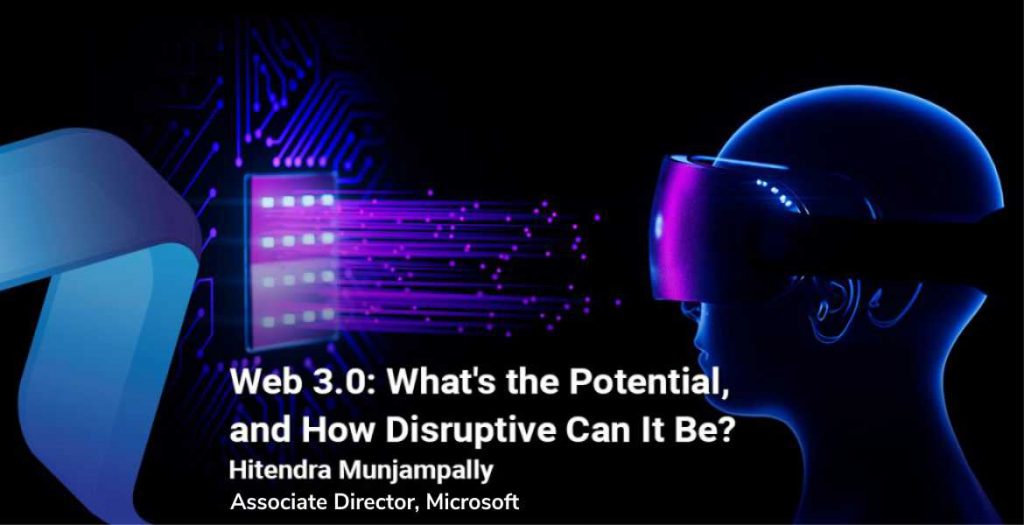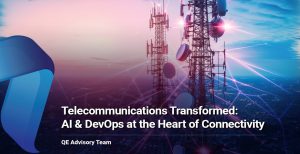We are on the brink of a new computing era, one driven by the rise of Web 3.0. But what is Web 3.0, exactly? And why should you care? Simply put, Web 3.0 is the next generation of the internet, and it has the potential to be a game changer for businesses and consumers alike. In 2006, the term Web 3.01 was coined by The New York Times reporter John Markoff. This new generation of the web is powered by three new layers of technological innovation – edge computing, decentralization, artificial intelligence (AI) and machine learning (ML). Additionally, blockchain technology will allow for greater security and transparency. Finally, the decentralized nature of Web 3.0 will allow for a more efficient and robust internet. While it is still early days, the potential for Web 3.0 is vast, and it has the potential to be highly disruptive.
As we continue to move into the digital age, the way we interact with the internet is evolving. This new generation of the web is made possible by technological advances, particularly in AI. With Web 3.0, users can search for and find information more easily and quickly than ever. Several leading global tech companies, including Google, Facebook, and Amazon, have shown interest in the Web 3.0 architecture of a virtual world. Microsoft is also lined up to leverage Web 3.0 blockchain technology to operate online businesses virtually. Microsoft has partnered with Meta, the parent organization of Facebook, which is the most aggressively growing metaverse company. Microsoft initially plans to step in with the Office 365 suite with virtual reality platforms as an initial offering to its customers in virtual space.
The Prominence of Microsoft Technologies in Web 3.0
Microsoft technologies will play a critical role in developing Web 3.0, the next internet generation. Web 3.0 is built on solid foundations laid by earlier web versions, and Microsoft is at the forefront of developing the technologies that will power it. Microsoft’s Azure cloud platform provides the scalable infrastructure that Web 3.0 applications will need to reach a global audience. In addition, Microsoft’s research teams are working on several innovative new technologies critical to Web 3.0, including everything from distributed ledger technology to natural language processing. Microsoft’s Cortana artificial intelligence assistant is already helping users find information online, and it will only improve as it continues to learn and evolve. In addition, Microsoft’s Kinect2 motion-sensing technology could enable users to control websites and applications using gestures. With its deep experience in software development and cloud computing, Microsoft is well-positioned to help shape the future of the internet. All these developments point to a future where the internet will be more intuitive and easier to use than ever before.
Significant Features of Web 3.0
Some of the significant features of Web 3.0 include:
- AI and ML help users find the information they need more quickly.
- A shift from traditional client-server architecture to peer-to-peer (P2P) networking. This will allow for more decentralized applications (dApps) that are not managed by any single entity.
- The use of blockchain technology to provide a trusted and secure platform for transactions and data storage.
- Thanks to the use of cryptography and decentralized data storage, there is increase in user privacy and security.
With these features, Web 3.0 has the potential to revolutionize the way we interact with the internet and pave the way for a more open, inclusive, and secure web for everyone.

As Web 3.0 shapes into a truly decentralized internet powered by blockchain technology, its rise is an important trend for companies to watch.
– Hitendra Munjampally Associate Director, Microsoft MOURI Tech
Notable Applications of Web 3.0
The re-decentralization of the internet, or Web 3.0, is gathering steam as more and more people become aware of the advantages of a decentralized network. While centralized applications have dominated the web for many years, blockchain technology is giving rise to a new wave of decentralized applications that promise to change how we interact with the internet. Here are some of the top trends in Web 3.0 that are set to disrupt the Financial Services, Media, Retail, and IT industries:
- Decentralized Finance (DeFi): DeFi is a growing ecosystem of financial applications built on Ethereum and other blockchain platforms. Using smart contracts and decentralized protocols, DeFi apps offer a wide range of financial services that anyone with an internet connection can access.
- Decentralized Applications (DApps): DApps are software applications that run on a decentralized network. DApps can provide users with a more secure and private way to interact with online services.
- Decentralized Autonomous Organizations (DAOs): DAOs are economic entities run by code rather than humans. DAOs can provide a more efficient and transparent way to run businesses and organizations.
- Tokenized Assets: Tokenization is the process of creating digital tokens which represent real-world assets. Tokenized assets can be traded on decentralized exchanges, offering several advantages over traditional asset classes.
- Non-Fungible Tokens (NFTs): NFTs are a type of digital asset which are not interchangeable with other digital assets. NFTs can provide a more unique and valuable way to represent digital assets.
- Decentralized Exchanges (DEXes): A DEX is a type of cryptocurrency exchange which does not require users to deposit funds with a central authority. DEXes are powered by smart contracts and are often more secure and user-friendly than traditional exchanges.
- Blockchain Gaming: The use of blockchain technology is opening up new possibilities for video gaming. Blockchain games are distributed and transparent, often allowing players to earn cryptocurrency rewards for playing.
- Web 3.0 Privacy Tools: The release of privacy-focused browsers and search engines gives users new ways to protect their online data. These tools use encryption and other security measures to help keep user data safe from prying eyes.
Conclusion
In conclusion, Web 3.0 is shaping into a truly decentralized internet powered by blockchain technology. While Web 3.0 holds great promise, it is still in its infancy. Many questions are yet to be answered, such as how to best provide security and scalability. In addition, there is still much work regarding user experience. However, the potential of Web 3.0 is enormous. The rise of Web 3.0 is an important trend for companies to watch. The ecosystem is robust, with sizable funding and obvious targets to disrupt. While this talk about identity and wallets is most pertinent for specific tech platforms, it also indicates the broader risk and opportunity that Web 3.0 poses when innovation challenges commonly held beliefs regarding who owns what and how to create defensible profit pools. All businesses must apprehend the scenarios that may influence their core markets now and where they might find possibilities in the future.
Meanwhile, we remain optimistic regarding the bright future of the third generation of the internet. As hard as it may be to believe, Web 3.0 is expected to blend even more seamlessly with our daily lives than web 2.0. In other words, this latest upgrade to the web is anticipated to be more interactive, perceptive, and omnipotent than ever before. So, although we have yet to have a definite idea of all the latest elements the third era of the internet will bring us, we can rest assured knowing that Web 3.0 has the potential to revolutionize the internet as we know it today.
Are you ready to take your business to the next level? MOURI Tech offers innovative solutions to help you accelerate your digital journey. If you’re interested in learning more about how we can help, please write us on inquiry@mouritrch.com
Hyperlinks
Author Bio:
Hitendra Munjampally
Associate Director, Microsoft
Hitendra has a strong track record of leading and enabling teams to deliver cutting-edge IT solutions to enterprise customers across Hi-Tech, Manufacturing & Health, Energy & Utilities, Travel & Logistics and Services industry domains. He has extensive experience in developing IT strategy, next-gen service offerings, pre-sales, technology solutions & accelerators to help customers digitalize and modernize their workloads, leveraging Microsoft capabilities.






